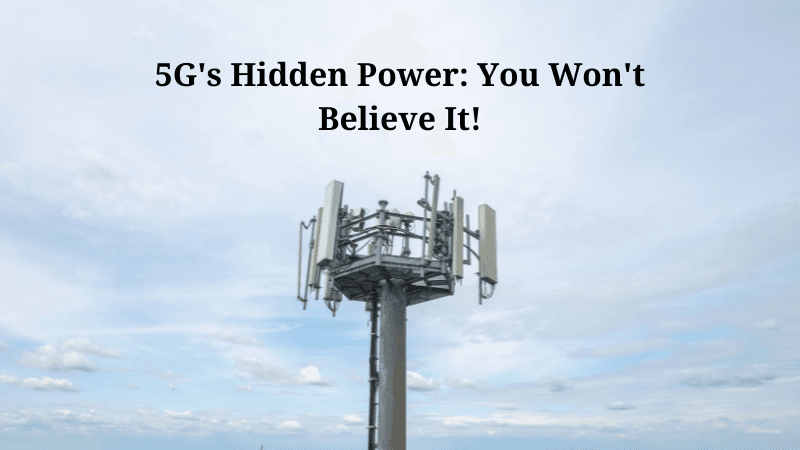That world is powered by 5G technology. As someone who has witnessed the rise of the internet from dial-up to fiber optics, I can confidently say that 5G is a game-changer. But what exactly is 5G? Why does it matter? And how will it shape the future? Let’s dive into the world of ultra-fast, low-latency wireless communication.

What is 5G Technology?
5G stands for fifth-generation wireless technology, offering significant improvements over its predecessors. 5G is different from 4G LTE. While 4G mainly offered faster mobile internet, 5G brings ultra-reliable, low-latency connections. It also supports massive machine-type communications and super-fast data speeds. It works on low, mid, and high (millimeter-wave) frequency bands. This gives better coverage, faster speeds, and greater capacity. These attributes make 5G a critical technology for smart cities, IoT, and autonomous systems.
How Does 5G Work?
5G is different from earlier generations. It uses a mix of radio frequencies, beamforming, and network slicing. It operates on three spectrums:
- Low-band (below 1 GHz): Offers broad coverage but lower speeds.
- Mid-band (1-6 GHz): Balances speed and coverage.
- High-band (24 GHz and above): Delivers ultra-fast speeds but has limited range.
Also, Massive MIMO (Multiple Input, Multiple Output) and beamforming improve efficiency. They ensure strong connections, even in crowded places. With this multi-layered approach, 5G networks achieve speeds up to 10 Gbps—nearly 100 times faster than 4G.
5G vs. 4G: What’s the Difference?
The most notable difference between 5G and 4G is speed and latency. While 4G LTE can reach speeds of 1 Gbps, 5G can exceed 10 Gbps under ideal conditions. 4G latency is about 50ms, but 5G cuts it down to 1-10ms. This change allows for real-time applications such as autonomous driving, cloud gaming, and remote surgery. Also, 5G has more bandwidth. This means it can connect millions of IoT devices at once. There’s no worry about network congestion.
Key Features of 5G
- Ultra-fast speeds – Data transfer rates of up to 10 Gbps.
- Low latency – Reduces lag to 1-10 milliseconds.
- Massive device connectivity – Supports 1 million devices per square kilometer.
- Network slicing – Creates virtual networks tailored for different applications.
- Energy efficiency – Optimizes power consumption, making networks more sustainable.
These features empower industries and users with unprecedented connectivity, efficiency, and reliability.
Applications of 5G in Different Industries
1. Healthcare
5G will transform healthcare. It will support telemedicine, robotic surgeries, and remote patient monitoring. Fast connectivity and low latency let doctors do remote procedures with real-time accuracy. Also, 5G helps send large medical data files faster. This improves diagnosis and patient care.
2. Autonomous Vehicles
Self-driving cars rely on instant data exchange with other vehicles, road sensors, and cloud systems. 5G’s low-latency communication ensures safer, more efficient transportation by minimising reaction times. Vehicles can process data in milliseconds. This lets them predict and avoid collisions, optimise routes, and reduce traffic congestion.
3. Smart Cities
5G is the backbone of smart cities, powering intelligent traffic systems, energy grids, and public safety networks. Real-time data collection helps optimize urban planning, reduce pollution, and enhance emergency response. From connected streetlights to real-time traffic management, 5G is key to building sustainable and efficient cities.
4. Entertainment and Gaming
Cloud gaming services like Google Stadia and NVIDIA GeForce Now depend on ultra-low latency for smooth gameplay. With 5G, lag and buffering become obsolete, allowing for real-time, high-resolution gaming experiences. AR and VR apps benefit from 5G’s high bandwidth. This makes immersive digital experiences easier to access.
5. Manufacturing and Industry 4.0
Factories leveraging 5G-powered automation, AI, and IoT can enhance productivity and efficiency. Real-time data analysis enables predictive maintenance, reducing downtime and operational costs. Robotics and smart sensors make supply chain logistics better. They ensure production is faster and cheaper.
Challenges and Limitations of 5G
Despite its potential, 5G has challenges that must be addressed:
- Infrastructure costs – Deploying 5G needs a big investment in small cell towers and fibre optics.
- Limited coverage – High-band 5G has a short range, requiring more cell towers.
- Device compatibility – Older devices do not support 5G, necessitating hardware upgrades.
- Security concerns – Increased connectivity opens new vulnerabilities for cyberattacks and data breaches.
- Regulatory hurdles – Spectrum allocation and licensing can slow deployment.
The Future of 5G and Beyond
By 2025, 5G adoption is expected to exceed 1.5 billion users worldwide. Innovations like 6G, which we expect by 2030, will push boundaries even further. They will bring terahertz frequencies and AI-driven networks. The future of connectivity will feature holographic communication, advanced quantum computing, and smooth interactions between humans and AI.
FAQs
5G can reach speeds of 10 Gbps, nearly 100 times faster than 4G, which typically maxes out at 1 Gbps.
Yes, older devices do not support 5G. You need a 5G-compatible smartphone or modem.
Yes, 5G technology is safe. Scientific research shows that radio frequencies used in 5G are non-ionizing, meaning they don’t harm human cells.
Healthcare, automotive, smart cities, gaming, and manufacturing are among the biggest beneficiaries.
Not entirely. Wi-Fi and 5G will coexist, with Wi-Fi preferred for indoor use and 5G dominating outdoor mobile connectivity.
Conclusion
5G is more than just faster internet—it’s a revolution shaping industries, cities, and our daily lives. From healthcare to self-driving cars, smart cities, and entertainment, the options are limitless. While challenges exist, continuous innovation and investment will drive global 5G adoption. As we embrace this transformation, one thing is clear: the future is connected, intelligent, and powered by 5G.